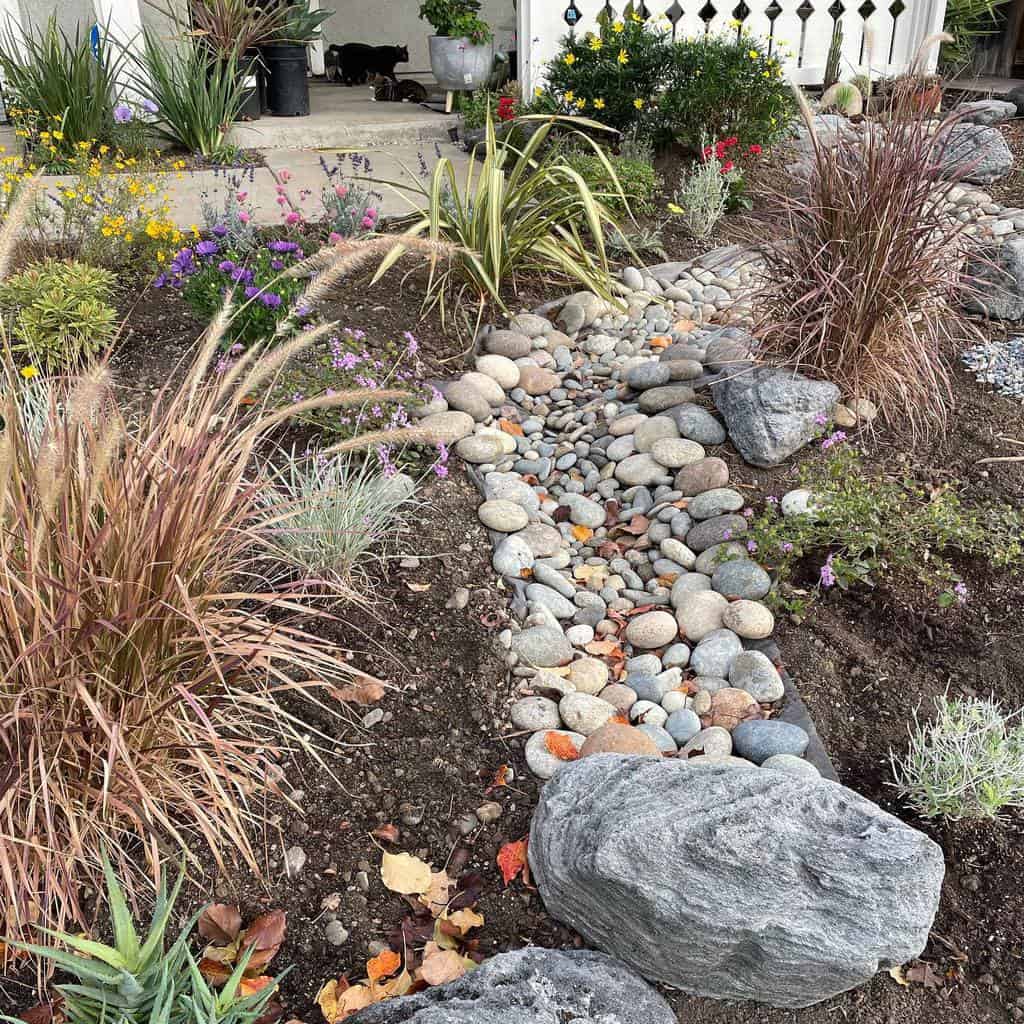Garden Tips: Limited Water Resources - Thrive in Dry Times

In the heart of a desert, there's an oasis. In the midst of water scarcity, there's a lush garden. Sounds like a mirage? It's not. With the right tips for gardening with limited water resources, you can transform your dry patch into a thriving ecosystem. Let's dive in and explore the secrets of water-efficient gardening.
Embrace Xeriscaping: Garden Smarter, Not Harder
Picture this: a garden that's not just surviving, but thriving in a dry climate. That's xeriscaping for you. It's not about creating a cactus farm; it's about choosing the right plants, designing efficiently, and maintaining your garden smartly.
Design with Water in Mind
Think of your garden as a watershed. Group plants based on their water needs - hydrozoning, as the pros call it. Place drought-resistant plants in the driest areas and those that need more water in the moist zones. This way, you're not wasting a single drop.
Choose Drought-Resistant Plants
Lavender, sage, rosemary - these aren't just herbs, they're water-wise warriors. These drought-resistant plants can tough it out in dry conditions. Native plants are another great choice, as they're already adapted to your local climate.
Water Efficient Gardening: Every Drop Counts
Watering your garden doesn't have to be a drain on resources. With water-efficient gardening, you can keep your plants happy and your water usage low.
Mulch: Your Garden's Best Friend
Mulch is like a protective blanket for your soil. It reduces evaporation, suppresses weeds, and regulates temperature. Organic mulch, like wood chips or straw, also improves soil health as it breaks down.
Water Deeply and Infrequently
Frequent, shallow watering encourages weak, shallow roots. Instead, water deeply and less often. This encourages strong, deep roots that are better equipped to handle drought.
Rainwater Harvesting: Nature's Gift
Why let rainwater go to waste when you can harvest it for your garden? Rainwater harvesting is like giving your garden a drink straight from the clouds.
Set Up a Rain Barrel
A rain barrel is a simple, effective way to collect rainwater. Place it under your downspout to catch the water that would otherwise be lost. You can then use this water for your garden when it's needed.

Create a Rain Garden
A rain garden is a shallow depression planted with native, water-loving plants. It collects and filters rainwater, preventing runoff and providing a habitat for local wildlife.
Irrigation Systems: Water Smarter
The right irrigation system can make all the difference in a water-wise garden. It's like giving your plants a personalized water delivery service.
Drip Irrigation: Precision Watering
Drip irrigation delivers water directly to the roots of your plants. This minimizes evaporation and ensures that water goes where it's needed most. It's like giving your plants a drink of water through a straw.
Smart Controllers: The Brains of the Operation
Smart controllers adjust watering based on weather conditions and plant needs. They can save you water and money by ensuring that your garden is only watered when necessary.
Maintain Your Garden: Love and Care
A water-wise garden still needs love and care. Regular maintenance will keep your garden thriving, even in dry times.
Weed Regularly
Weeds compete with your plants for water. Regular weeding ensures that your plants get all the water they need. Think of it as evicting unwanted guests from your garden party.
Prune with Purpose
Pruning reduces the amount of water a plant needs. It's like giving your plants a haircut to help them stay cool and hydrated.
Conclusion: Thrive in Dry Times
Gardening with limited water resources doesn't have to be a challenge. With xeriscaping, drought-resistant plants, water-efficient gardening, rainwater harvesting, and the right irrigation systems, you can create a lush oasis in even the driest of climates. So, are you ready to turn your dry patch into a thriving garden? Remember, every drop counts, and every effort makes a difference. Happy gardening!

FAQs
What is xeriscaping? Xeriscaping is a landscaping method that focuses on water conservation. It involves choosing drought-resistant plants, designing efficiently, and maintaining your garden smartly.
What are some drought-resistant plants? Some drought-resistant plants include lavender, sage, rosemary, succulents, and many native plants. These plants are adapted to thrive in dry conditions.
How can I collect rainwater for my garden? You can collect rainwater using a rain barrel placed under your downspout. You can also create a rain garden, a shallow depression planted with water-loving plants that collects and filters rainwater.
What is drip irrigation? Drip irrigation is a type of irrigation system that delivers water directly to the roots of your plants. This minimizes evaporation and ensures that water goes where it's needed most.
How can I reduce my garden's water needs? You can reduce your garden's water needs by choosing drought-resistant plants, mulching, watering deeply and infrequently, weeding regularly, and pruning with purpose.
External Resources:
0 Response to "Garden Tips: Limited Water Resources - Thrive in Dry Times"
Post a Comment